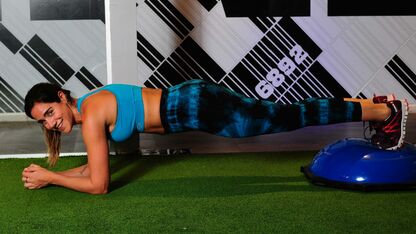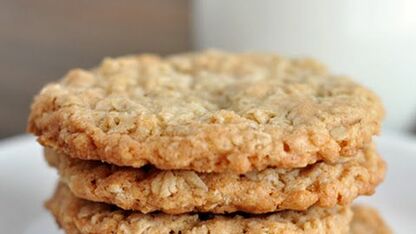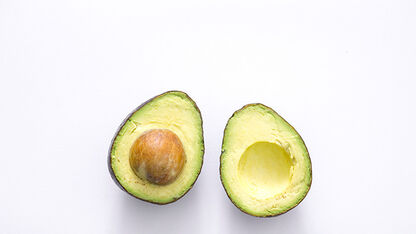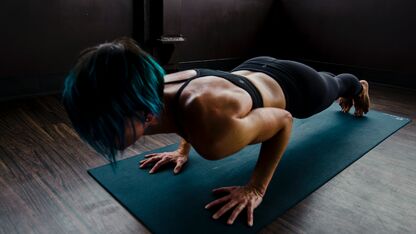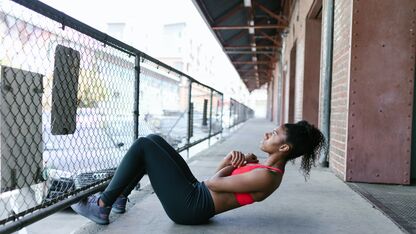Why you should've started foam rolling yesterday
ROCK, STRETCH ‘n’ ROLL! That’s what I live by when it comes to staying fit. It stands for working out - building up strength and stamina, stretching (dynamically) to lengthen my muscles and staying flexible, and… ROLL? Yep, I roll. Allow me to introduce you to some awesome tools and techniques that I use to massage my body to stay fit, mobile and (muscle) pain-free!

Rockin’ & ROLLING
In my first article I already mentioned that I spend part of my time working for BLACKROLL. This Swiss/German brand is market leader in the German speaking part of Europe in the reach of production and sales of self-massage -and simple but incredibly effective fitness tools.
Whether you are into sports or not, in BLACKROLL’s view, everyone should be able to stay mobile, pain-free and therefore happy and healthy. This fits my personal view just perfectly. That’s why I’m happy to explain a little more about this cool technique, dubbed “SMR” (self-myofascial release), and the what’s and why’s surrounding the topic of foam rolling.
Get in the know. Now!
I’m guessing (and hoping) it’s not the first time you heard about or seen a roll, knowing that I’m dropping this info on a Fit Girl Platform. Because (fortunately!) these types of –self massage– tools are more and more integrated into the sports and therapy environment nowadays.
Last year, BLACKROLL started to appear in the Dutch press as well, for instance in GLAMOUR magazine and in Women’s Health. However, this doesn’t even come close to what BLACKROLL has already managed to do in Germany and the rest of the world. In Germany, everybody knows what BLACKROLL - ‘the roll with the hole’ - does and how it works. Mind you. So take your head out of the sand, get informed, and start rolling!
It’s all connected
In the first place, the (original) BLACKROLL is used to release tensions and adhesions, which are formed in our musculature and its surrounding tissue: the fascia (connective tissue). When we experience ‘knots’ (adhesions) in our muscles, we feel stiff and are uncomfortably moving. What you maybe didn’t know that it’s actually not the muscle itself that is tensed. It is in the fascia within and surrounding the muscle, where tensions are created.
What happens is that we start to compromise certain movements, creating even more stiffness and imbalance, and as a result, we feel more restricted. We start to push our limits, and even increase the risk of injury.
However, it’s possible to get rid of this stiffness and discomfort.
But how do you do that? I hear you thinking: couch time! Yes and no. Recovery requires rest too, that is right, but starting to move again, is definitely the better option. What you do additionally, is start paying attention to your fascia and training this ‘secret organ’!

Our FASCIA-nating body
It is really amazing how our bodies work, and learning about fascia will make you even more astounded. Fascia is basically a 3D full-body cat suit that we wear underneath our skin, covering everything in our body from the back of our head to the plantar fascia (soles) underneath our feet. This fluid structure gives our organs, bones, muscles, and even the nerves support and connects everything to everything: such as the connection of muscle to bone (tendons) and bone to bone (ligaments). Even the smallest muscle fibres and their smaller bits and pieces, of which one single muscle group exists, are covered in this ‘glue-y’ tissue, called fascia.


As I mentioned, fascia is a fluid tensional system. Like glue on a water base. That is why we need to keep this tissue hydrated. VERY important! Not only drinking water is good for you, that's passive work, fluids need to flow, too. It needs to be active. For this to work, the fluid system needs to be stimulated so that fascia can keep functioning well – soaking up fresh bodily fluids. If the fascia lacks water, it will dry out, which is exactly what creates tensions and knots – restricting you in your movement. Just like a sponge, we need to wring this tissue out – in order for it to soak up new, fresh water, filled with nutrients. Like this, the sponge gets ‘fluffy’ and flexible again, releasing stiffness.
What happens when you roll?
When we use a Blackroll, we put pressure on a certain part of the body. Just like a dough roller, we use the roll, along with gravity and the weight of our body, to basically push out the tensions we feel in our arms, legs, back, neck, wherever! The effect is just like a ‘real’ massage. But who needs a pair of hands, when you’ve got your own body and a roller?! This technique is also used by physical therapists and osteopaths, for instance, to ‘unknot’ certain pressure or trigger points. The technique that is used when rolling with a Blackroll is referred to as SMR: self-myofascial release. Self, because you make the massage/release happen yourself, obviously. Then the latin part: myo = muscle. Fascia = …well, you must know by know, connective tissue.

As spoken of before, the pressure of the roll and the weight of your body will make the fluids flow and send them back to where hydration is needed. Doing a full-body roll out is then exactly what you need during a ‘rest-day’ to recover faster or even just before or after your daily work out routine, to warm up, to cool down, or to get the muscular system activated and blood circulation stimulated.
The results afterwards are crazy. You'll feel much more free in your own body! But a warning is in place here: take into account that practice makes perfect. This technique WILL hurt because there are much more nerve endings in the fascia than in the muscle cells itself. But hey, a little pain doesn’t kill you. This kind of pain we like to call ‘Wohlweh’ in German. It just hurts so good…
And you know what? The more it hurts, the more you need it! So just start and treat yourself to a self-massage each time you see a roller or stumble over it at home. Me, I put my Blackroll next to my bed and next to my desk. This way, I never skip a day of rolling.

START ROLLING – STAY MOBILE!
Got curious? I hope so. I dare you to pick up a roller in the gym or check the BLACKROLL products to order your own, to see how it feels for you.
I’m glad to announce that BLACKROLL will bring out new instruction videos in February! So keep informed by following the facebook page. Your physiotherapist, or personal/fitness trainer will also know how to get you rolling. If not, shame on him/her! Directly send this individual a link to this article ;-)
Youtube is a good rolling buddy as well: find some rolling inspiration here and here. For those not into self-massage (please try it anyway!! It’s too good for you to miss out) or eager to try new things, Blackroll tools also serve as a perfect functional training tool!

So welcome ‘the roll with the hole’ into your life with open arms and never let go of it again! It’s crucial to combine self-massage with any sport you are doing, to keep optimally mobile and feeling good in your own skin. NB: The results will only show if you keep on doing it. This is a long-term commitment! Just like doing any sport, the SMR technique needs training and repetition.
To end this long, complex story easily: the softest version of Blackroll (the MED, the pretty pink one) is also awesome to wind down and to just sleep on… ;-) Hope you got inspired. Want to read more about fascia and SMR? I recommended this article.

Rock & ROLL!
Follow me on Facebook for more info about foam rolling.
with love,
Eefje

